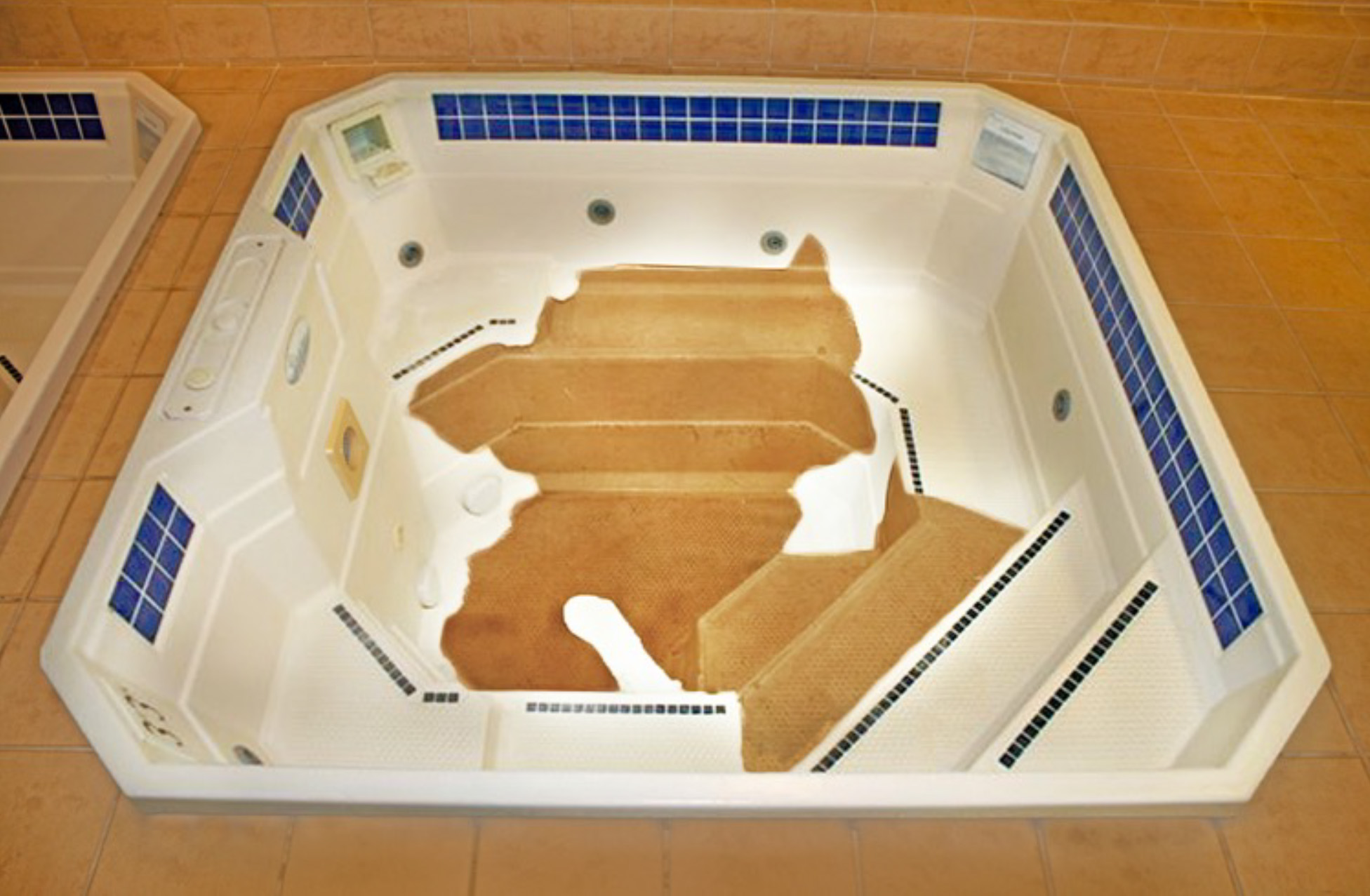John’s discovery of crazing in his spa’s acrylic surface is not just a cosmetic concern but a challenge that demands a nuanced approach to repair. Crazing, characterized by fine, intricate cracks, poses a unique problem that cannot be solved by simple patchwork. This blog delves into the intricacies of addressing crazing in acrylic spas, drawing on Multi-Tech Products’ (MTP) expertise.
Crazing occurs when the acrylic surface of a spa develops tiny cracks. While it doesn’t compromise the spa’s ability to hold water, it does affect its aesthetic appeal. The photo provided by John illustrates the extent of crazing, which can range from superficial to severe. The root cause often lies in the manufacturing process, particularly in the presence of trapped styrene from the polyester resin backing system.
Repairing crazed acrylic is not straightforward. It necessitates the removal of the affected surface layer, a task requiring precision to avoid damaging the structural integrity of the spa. Here’s a step-by-step guide based on MTP’s recommendations:
While repairs can mitigate the effects of crazing, preventing its occurrence is preferable. Using a spa cover is crucial in protecting the acrylic surface from environmental factors that contribute to crazing. In cases of minimal crazing, creative solutions like applying paste wax can fill micro-cracks, making them less noticeable.
Heat Treatment: For less severe crazing, a heat gun can relax and diminish the appearance of micro-cracks by heating the surface to about 220ºF. This method requires careful handling to avoid damaging the acrylic.
Given the complexity of crazing repairs, seeking professional advice or services may be beneficial. MTP’s guidance underscores the importance of understanding the underlying causes of crazing and adopting a meticulous approach to repair and maintenance.
Crazing in acrylic spas is a repairable issue, but it demands a methodical and informed approach. By following the procedures outlined by MTP, spa owners can successfully address crazing, restoring the beauty and longevity of their investment. Preventive measures, including regular use of a spa cover, play a vital role in maintaining the pristine condition of acrylic surfaces, ensuring that your spa remains a source of relaxation and enjoyment for years to come.



Find all the essential information about Multi-Tech Products, from contact details to terms of service, in our comprehensive footer section. We’re here to help you with all your surface repair needs.

Your order has been confirmed & it is on the way. Check your email for the details